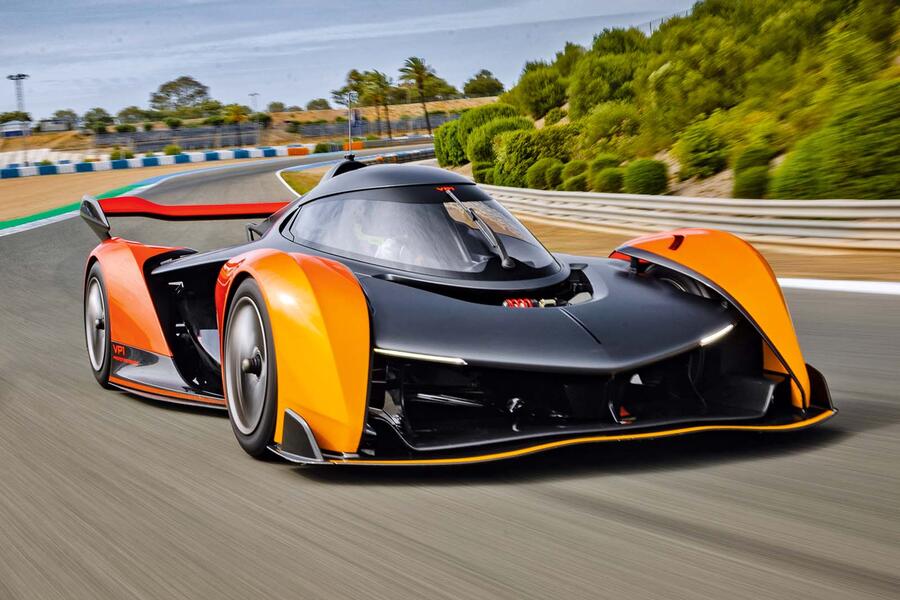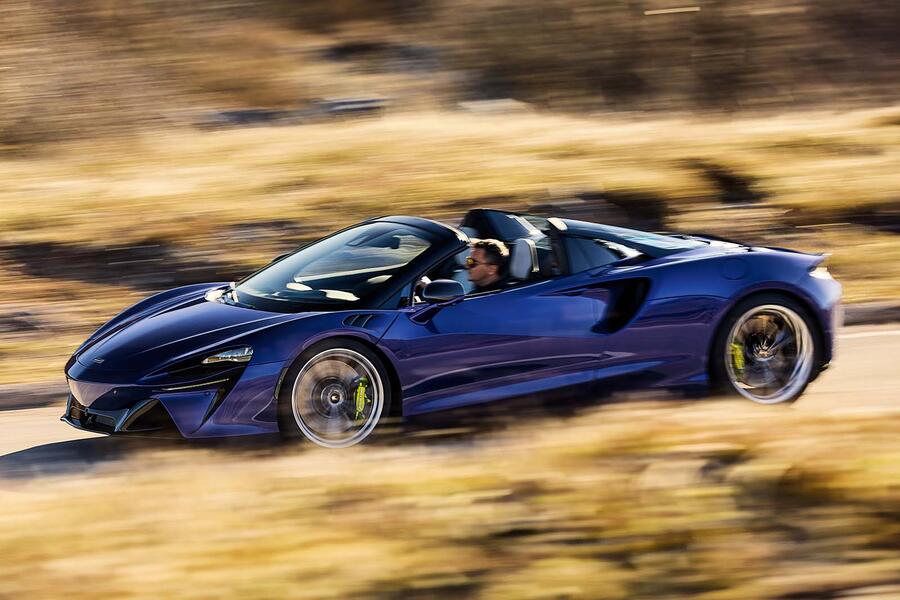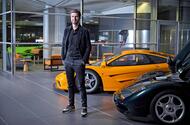At one of its most pivotal times, Tobias Sühlmann reveals what Woking's new cars will look like
When McLaren Automotive chief design officer Tobias Sühlmann is looking for inspiration, he doesn’t have to go far to find it: he just needs to go out for a sandwich.
“Every day when I go for lunch, I walk along this boulevard and suck in the history of the brand, and that’s something we need to think of for the future,†he says, gesturing along the main atrium of the McLaren Technology Centre in Woking.
Along its vast length there sits an incredible display of machinery: race cars include Bruce McLaren’s M8D Can-Am monster, Alain Prost’s Formula 1 title-winning MP4/2B and Lando Norris’s current MCL38, while road cars range from the fabled F1 and the transformative MP4-12C to the Speedtail and Elva.
The machinery is a reminder of McLaren’s rich heritage – and Sühlmann is using it to chart a new direction for the future. “I ask my team to walk down here, find some details and then develop a new interpretation of them,†he says. “When you see the boulevard, you get inspired – and you realise you can do a lot with this brand.â€

This line of cars also explains why Sühlmann was lured back to McLaren – he served as Special Projects design chief in 2021, working on the virtual-racer-made-real Solus GT – from his role as Bentley’s head of exterior design last September.Â
“I’ve worked at a lot of companies, from big manufacturers to smaller firms,†the German says of a career that has also included stops at Volkswagen, Bugatti and Aston Martin. “McLaren is my dream company.â€
Sühlmann’s return to the supercar maker comes at a pivotal moment, with the McLaren Group now owned fully by the Bahraini state investment fund after recent financial troubles.
With ex-Ferrari man Michael Leiters in charge, the automotive division is looking at a future range expansion – one likely to include SUVs and electric cars.
Much of Sühlmann’s work since his return has been to develop a new design language, which will be reflected in three external design signatures: two symmetrical elements and a low nose at the front; a long nose, short rear and forward-leaning ‘performance line’ on the side; and an ‘open’ back end with a horizontal element.
Those stylistic hooks have been developed based on common features of racing and road-going McLarens – but, Sühlmann insists, that won’t lead to retro designs.

“We come from racing, and everything is part of that,†he continues. “We need to look into the whole brand and into its DNA to understand and shape the future. We have a strong fan base and a strong customer base, and people buy and love our products because of our racing heritage. We didn’t start a car company and then start a racing team; we did it the other way round. That’s fascinating to me.â€
While McLaren’s racing history dates back to 1963, the Automotive division is just 14 years old. Even so, it has developed a strong identity.
“Everyone can look at a McLaren and know it’s a McLaren,†says Sühlmann. But that is, in part, because the shared base of many of the firm’s models means they can all look a little similar. That will also change in the future with the new language, promises Sühlmann.
“The idea is to create different characters and different identities for different products and separate the models more strongly from each other,†he says. “People won’t just recognise a McLaren; they will recognise the model.â€
So far, McLaren has only hinted at the new design language in a few explanatory sketches, but Sühlmann and his team are on the road to creating a new generation of cars – even if he won’t discuss specifics about them.
“It’s definitely shifting forward,†he says. “This is one of the biggest shifts in history, because the brand is changing and we will see more in the portfolio. We need to look into different powertrains as well, so this new language is important. It’s not a gimmick.â€

Sühlmann won’t discuss in detail any plans McLaren has for future electric vehicles but says: “When we look into doing those sorts of cars, we will do it the McLaren way. When we do a McLaren, the badge should stand for something.
“We need to look into proportions, but you will definitely see a short rear overhang, a long front overhang, some form of performance line and openings in the front and rear. So you will say ‘yes, that is a McLaren’. It will be a recognisable, powerful statement.â€
One key trend that will apply to all models, whatever their power source, is form following function. Sühlmann maintains that functionality will remain a key element of the design. “You see this in our past models, and you will see it in future ones,†he adds.
That link between functionality and form is perhaps best seen in Sühlmann’s Solus GT, which serves as an example of McLaren’s desire “to push the boundaries and go beyondâ€, and a key element of that approach is to make the technology visible and celebrate it.
Sühlmann continues: “We want to celebrate the parts. So if you don’t need an opening, leave it. If you need a different surface, work on it until it’s perfect. We work hand in hand with engineering and aerodynamics, and that leads us to a very special aesthetic.â€



